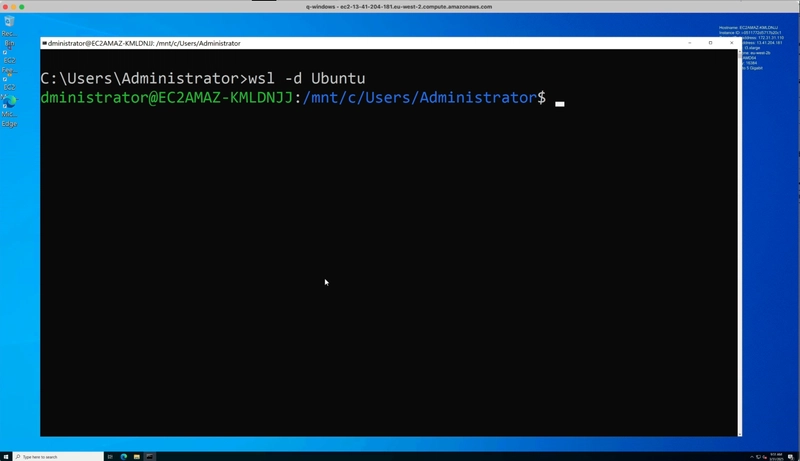Don't Let Automation Replace Good Testing Behaviors
I recently worked with a talented development team that heavily embraced both automation and Test-Driven Development (TDD). While their commitment to both was evident, I observed a pattern that highlighted the importance of maintaining good testing habits, even in highly automated environments using TDD principles. They had impressive automation pipelines: automated deployments, infrastructure provisioning, security audits, and code quality checks. They used tools like Renovate for automatic dependency updates and sophisticated pre-commit hooks to prevent commits with failing tests. Their isolated full-stack development environments seemed ideal for confident development. However, I noticed a recurring issue: developers frequently encountered failing tests during commits, triggered by the pre-commit hooks. This wasn't just occasional; it was routine, despite their adherence to TDD. Further observation revealed these contributing factors: Slow, Expensive Tests: The team favored behavioral tests (integration and end-to-end), which were time-consuming and required complex environment setups. Selective Test Execution: Developers often ran only relevant tests, assuming code isolation and trusting the codebase's robustness, neglecting broader regression checks. Key Takeaways: Prioritize Continuous TDD Cycle: Don't let automation replace the red-green-refactor cycle of TDD with reliance on post-commit checks. Failing tests at commit time indicate a breakdown in this process. Optimize Test Speed: Address slow test suites. Investigate setup times, state management, test determinism, and environment dependencies. Slow tests encourage batching changes, hindering rapid feedback. Shorten Feedback Loops: Don't solely rely on pipeline tests. Run tests locally frequently. Faster feedback enhances confidence and agility. Validate Assumptions: Never assume code isolation. Run comprehensive tests with every change to catch unexpected regressions. Embrace Manual Exploration: Automation cannot replace human interaction. Perform exploratory testing locally and in lower environments. User-centric testing uncovers bugs and usability issues missed by automated checks. Automation Enhances Value, When Implemented Correctly: Good automation is valuable, but it should complement, not replace, fundamental testing behaviors and the TDD process. Ensure your automation provides real value and reduces, not increases, development overhead. In essence: Automation is a powerful tool, and TDD a strong development methodology, but neither should become a crutch. Maintaining diligent testing practices—frequent local testing, thorough validation, and manual exploration—remains crucial for delivering high-quality software. Embrace automation and TDD, but don't abandon the principles that ensure reliable, working software.

I recently worked with a talented development team that heavily embraced both automation and Test-Driven Development (TDD). While their commitment to both was evident, I observed a pattern that highlighted the importance of maintaining good testing habits, even in highly automated environments using TDD principles.
They had impressive automation pipelines: automated deployments, infrastructure provisioning, security audits, and code quality checks. They used tools like Renovate for automatic dependency updates and sophisticated pre-commit hooks to prevent commits with failing tests. Their isolated full-stack development environments seemed ideal for confident development.
However, I noticed a recurring issue: developers frequently encountered failing tests during commits, triggered by the pre-commit hooks. This wasn't just occasional; it was routine, despite their adherence to TDD.
Further observation revealed these contributing factors:
- Slow, Expensive Tests: The team favored behavioral tests (integration and end-to-end), which were time-consuming and required complex environment setups.
- Selective Test Execution: Developers often ran only relevant tests, assuming code isolation and trusting the codebase's robustness, neglecting broader regression checks.
Key Takeaways:
- Prioritize Continuous TDD Cycle: Don't let automation replace the red-green-refactor cycle of TDD with reliance on post-commit checks. Failing tests at commit time indicate a breakdown in this process.
- Optimize Test Speed: Address slow test suites. Investigate setup times, state management, test determinism, and environment dependencies. Slow tests encourage batching changes, hindering rapid feedback.
- Shorten Feedback Loops: Don't solely rely on pipeline tests. Run tests locally frequently. Faster feedback enhances confidence and agility.
- Validate Assumptions: Never assume code isolation. Run comprehensive tests with every change to catch unexpected regressions.
- Embrace Manual Exploration: Automation cannot replace human interaction. Perform exploratory testing locally and in lower environments. User-centric testing uncovers bugs and usability issues missed by automated checks.
- Automation Enhances Value, When Implemented Correctly: Good automation is valuable, but it should complement, not replace, fundamental testing behaviors and the TDD process. Ensure your automation provides real value and reduces, not increases, development overhead.
In essence:
Automation is a powerful tool, and TDD a strong development methodology, but neither should become a crutch. Maintaining diligent testing practices—frequent local testing, thorough validation, and manual exploration—remains crucial for delivering high-quality software. Embrace automation and TDD, but don't abandon the principles that ensure reliable, working software.


































































![Apple's M5 iPad Pro Enters Advanced Testing for 2025 Launch [Gurman]](https://www.iclarified.com/images/news/96865/96865/96865-640.jpg)
![M5 MacBook Pro Set for Late 2025, Major Redesign Waits Until 2026 [Gurman]](https://www.iclarified.com/images/news/96868/96868/96868-640.jpg)
![Apple to Revamp Health App with AI-Powered Doctor [Gurman]](https://www.iclarified.com/images/news/96870/96870/96870-640.jpg)














![What Google Messages features are rolling out [March 2025]](https://i0.wp.com/9to5google.com/wp-content/uploads/sites/4/2023/12/google-messages-name-cover.png?resize=1200%2C628&quality=82&strip=all&ssl=1)































































































































































![[The AI Show Episode 141]: Road to AGI (and Beyond) #1 — The AI Timeline is Accelerating](https://www.marketingaiinstitute.com/hubfs/ep%20141.1.png)
![[The AI Show Episode 140]: New AGI Warnings, OpenAI Suggests Government Policy, Sam Altman Teases Creative Writing Model, Claude Web Search & Apple’s AI Woes](https://www.marketingaiinstitute.com/hubfs/ep%20140%20cover.png)
![[The AI Show Episode 139]: The Government Knows AGI Is Coming, Superintelligence Strategy, OpenAI’s $20,000 Per Month Agents & Top 100 Gen AI Apps](https://www.marketingaiinstitute.com/hubfs/ep%20139%20cover-2.png)






























































































































![From broke musician to working dev. How college drop-out Ryan Furrer taught himself to code [Podcast #166]](https://cdn.hashnode.com/res/hashnode/image/upload/v1743189826063/2080cde4-6fc0-46fb-b98d-b3d59841e8c4.png?#)






![[FREE EBOOKS] The Ultimate Linux Shell Scripting Guide, Artificial Intelligence for Cybersecurity & Four More Best Selling Titles](https://www.javacodegeeks.com/wp-content/uploads/2012/12/jcg-logo.jpg)
























.jpg?width=1920&height=1920&fit=bounds&quality=80&format=jpg&auto=webp#)


OSAMU-NAKAMURA.jpg?width=1920&height=1920&fit=bounds&quality=80&format=jpg&auto=webp#)






.png?#)




















































